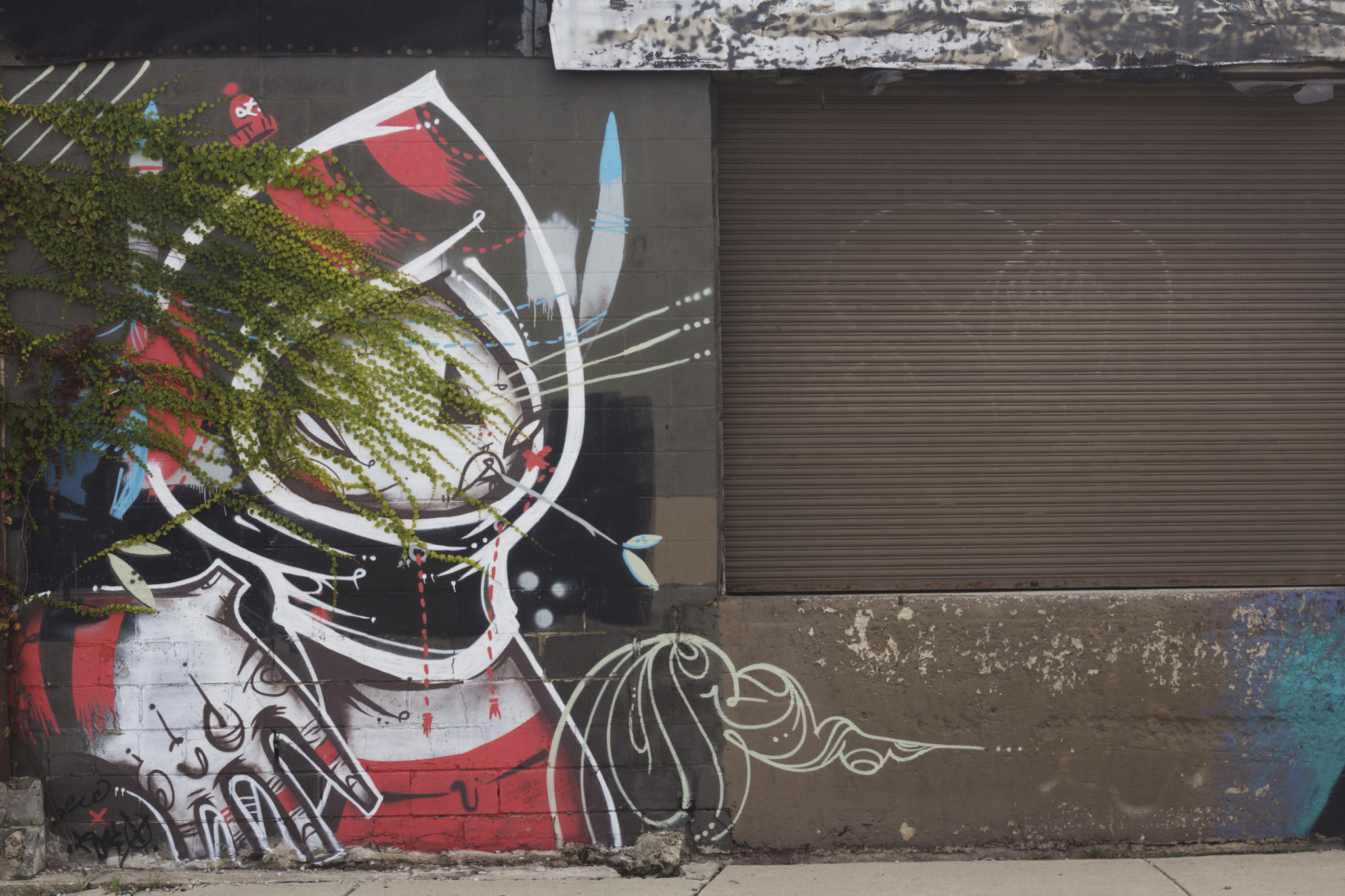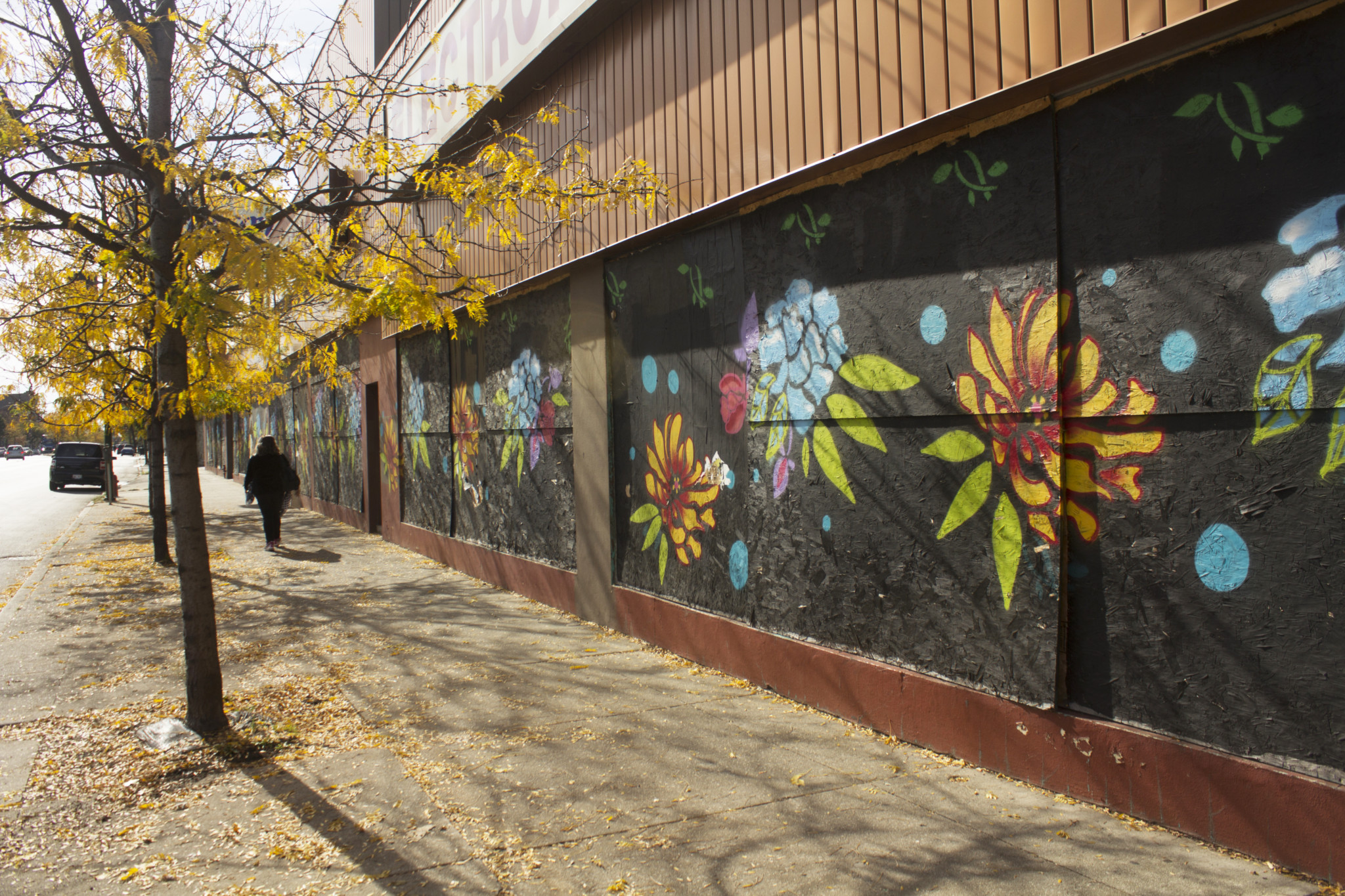Gloria “Gloe” Talamantes is a graffiti educator, artist, Chicago native, and founder of the Brown Wall Project. Gloe created this public art initiative in Little Village in 2006 to beautify the city by painting on walls that the city has buffed—the practice of painting over walls with brown paint to remove graffiti. The Weekly sat down with Gloe to talk public art, erasure, and community engagement.
What sparked your interest in art, and when did you realize it was an important tool for you?
I know I’ve been artistic and creative since I was young, I just didn’t have the resources to realize it. I started doing graffiti in 2000 as a senior in high school, and that’s how I started getting more into art and art education and trying to learn more about different art forms. But graffiti is what has taught me most, if not all, of what I know now of public art and space. Almost everything that I’ve ever got interested in doing stemmed from graffiti or the graffiti culture of Chicago.
As a graffiti artist, or “writer,” as those in the community call themselves, what does the buff, this erasure of graffiti via power washing or painting over with brown paint, represent to you?
The graffiti buff means constant erasure and control over someone’s creative expression…It means erased voices, different voices, not just [regarding] graffiti…but all types of voices from different neighborhoods. It means control from one end and critique of what is deemed artistic and what is not, what can stay up and what doesn’t. What the graffiti blaster program was intended to do was be something that keeps the neighborhoods beautified by not allowing graffiti pieces or throw-ups on the walls. I think it’s actually the opposite—it creates different patchwork on buildings and makes buildings really vulnerable to deterioration on the brick. I think it’s complicated when I think about what the graffiti buff means to me, because I think about so many different things when I think of the buff system we have.

When you travel on the South and West Sides, where many of the kids in your programs live, what does the buff do to these areas?
I don’t think the buff offers young people the opportunity to see their neighborhoods striving. I think the buff is a way of further stopping narration from people in the neighborhood telling their own story. If you travel the city from the North Side to the South/Southwest Side you see a huge difference if you’re riding along the main avenues. A lot of times what I’ve noticed in communities like Lincoln Park, for example, [is that] a lot of the things that do get buffed get sandblasted. In communities like Little Village or Back of the Yards, the communities that I’m mostly in, things don’t get sandblasted. They get painted over, sprayed with brown paint. That to me just tells me the inequity there of who gets that service and why.
So you’re saying in some communities the stuff is actually removed while in other communities it’s just painted over?
Yes.
So how does that relate to the Brown Wall Project? Why did you start it?
I started back in 2006…for the sole purpose of having space to practice and work on graffiti productions. When I was painting graffiti with the crew I wasn’t able to paint on their main walls because I wasn’t good enough…so that caused me to want to get my own space, to create the space that people like myself didn’t have. It was also a response to the graffiti blaster program, and with the Brown Wall Project I was intentional about scouting walls that were buffed and brown to change the look of my neighborhood.
I want it to be a project that…finds solutions within the communities that are affected by the buff, to allow the people…in these communities to take over their own narrative. I want youth to be able to think critically about those things without other people projecting their opinions on what anything is in their neighborhood, but rather let them take it in their own hands and just create what it is that they want to create to define their neighborhood and really take ownership. People have become disinvested in these communities because they don’t see any value in it. I’m not trying to create art for people who have the access—my purpose is to create for people who don’t have the access and don’t have the resources.
What’s an example of a project you’ve run with your students?
There’s a project we started two years ago painting boarded-up houses in Back of the Yards. That started because we started questioning why there are so many boarded-up houses in Back of the Yards. They’re not dilapidated, or at least a majority of them aren’t, they’re just abandoned. But they’re not fully abandoned because someone took the time to cover them up.
This was a way to get students to study and research the history of their neighborhood in Back of the Yards. They realized that these houses were abandoned not because their neighborhood was bad. They learned about the stockyards and…about the industry and…how a lot of that industry is no longer there. These houses aren’t being utilized because all the jobs left. They’re not necessarily being abandoned because the neighborhood is bad; they’re being abandoned because there aren’t as many jobs as there were. You could even see in the structure of these houses, they were built pretty fast and they were built for working-class families. The action part of the project is painting the board-ups. The first one we did was a nineties-themed board-up house, in front of the Port Ministries. We created embellishments for the board-up.
How have Brown Wall Projects been received by the community in neighborhoods like Back of the Yards?
There’s been a lot of positive feedback. The buff’s effects have always been a conversation we’ve had in the graffiti community.
I feel like the Brown Wall Project allows the conversation to grow in a different way. It focuses on using different methods to educate young people and older people who don’t know about graffiti [and] public art and how it gets created.
What’s your ultimate goal for the Brown Wall Project?
The Brown Wall Project can and should be a model for other cities nationally and internationally to follow, to create space for people and artists to form discourse that’s for everyone, not just the people who are already at the table—but also to create more room for people to be at the table and be part of these discussions, and be part of the solutions.
Support community journalism by donating to South Side Weekly

